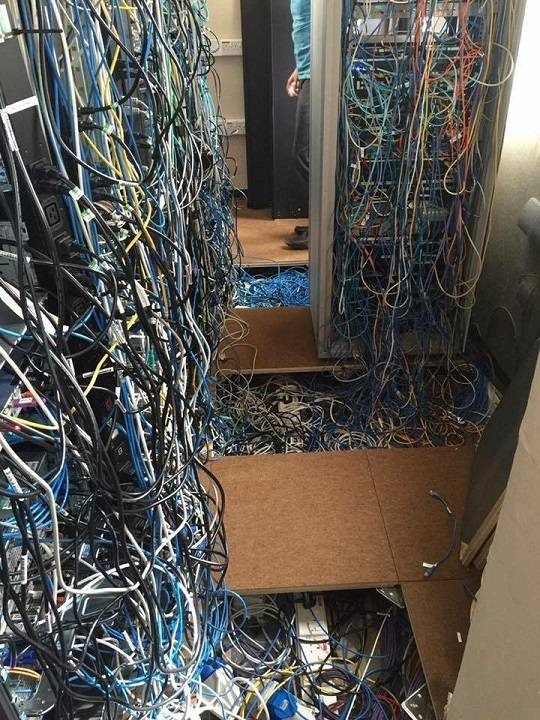
Is it Time to Upgrade Your Pathways and Practice Proper Abatement?
No matter the type of transmission media, the cables will require some type of pathway, support or conveyance mechanism to get from point A to point B. Pathways come in a variety of configurations to support the cables that connect our end devices. All have limited fill ratios, and some get overfilled over time due to moves, adds, and changes and increasing cable diameters.
In the US, there is a code requirement to remove abandoned cable from these pathways and spaces. That is not always the most straightforward task as the cables that need to be removed often end up buried under other cables and are difficult to identify. So as these no longer in use cables sit in trays, then more cable gets added compounding the problem.
When performing cable abatement (removal of abandoned cable), one trick is to make sure that each generation of cable has a different jacket color. Even though this goes against color coding site specifications, it makes sense to change those specifications for different categories making the identification of what needs to be cut up and removed easier. For fiber, the cladding is a different color for most grades, although Erica Violet is relatively new. It is not always enough to try to count on various diameters to identify cables as the differences can be too subtle. Likewise, trying to read the rating on jackets in dark spaces isn’t always the best solution either. In some cases, one might be lucky enough to use old cables as pull strings for the upgrade, but that rarely works in filled pathways.
People tend to forget to audit their pathways. The thought is, “If the cable fits, there it sits.” But this could not be further from the truth. A tray is designed for specific weight loads and fill. The weights are supported via the tray support mechanisms and the tray itself. You can’t keep adding to it and not expect some failure at some point. Do pathways collapse? Absolutely. The cables at the bottom can also fail due to the twists in the pairs or macro-bends in the fiber.
As upgrades and additional cables are added to the cabling systems, it makes sense to take stock of the pathways provided and their limitations. It may make sense to run new pathways for new cable plants during the upgrade. This could include j-hooks, basket tray, ladder rack, plastic fiber tray or any other conveyance system in place. If there is no pathway system, now is an excellent time to add one to become standards compliant. Conductive metal tray systems must be attached to the appropriate telecommunications grounding system. Now would be a good time to check those grounding connections.
To properly audit your pathways, you don’t necessarily have to verify them all. Start with the most populated pathway. If that one proves to be good, then the pathway system should be good. If not, then work backward from most crowded to least until you know you are within the tolerances for each type of basket tray, ladder rack or hook systems.
To do this, get a count (as best you can) of the number of cables in the pathway. Remember 40% is considered full by the standards to allow for airspace between cables. Once you count the number of cables, find the weight per foot from the manufacturer and the O.D. of the cable. If the original cabling manufacturer is no longer in existence, you can relatively safely use the same from another manufacturer. Then go to the tray manufacturer’s website (or one with very close specifications) and calculate the fill.
If your conveyance systems are close to capacity, it’s time to either abate the old cable or add new/additional tray for new cabling systems. In some cases, you may be able to add additional supports for weight, but that won’t fix the problems of smashed cables at the bottom of the stack. In data centers, maybe this is a good time to make sure that older pathways are not zinc to avoid the problem with zinc whiskers. The same rules hold true for cabinets and wire management in the data center. Remember, these, too are part of your cabling conveyance system.
Cable abatement takes careful planning in a live environment. If your abatement project is large, it may make sense to temporarily relocate resources so that you can perform the replacement in a down environment or empty part of your data center. No matter how you do it, pay attention to your pathways before they fail. For assistance in pathway selection and evaluation, don’t hesitate to reach out to your Paige salesperson.

